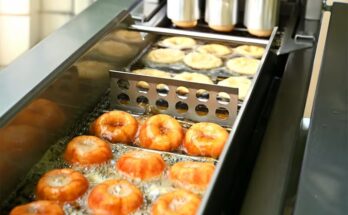Food businesses have been some of the most hard-hit by the worldwide coronavirus pandemic. And while buffet restaurants with self-serve options were a popular choice for many diners pre-COVID19, these days, fewer people feel confident to go and serve themselves food in that way. If you run a buffet or another type of restaurant where people are given the option to serve themselves, you may have had to consider making a few changes to the way that you do things in order to keep your customers safe and encourage people to continue to dine there.

Sneeze Guards:
Placing sneeze guards to create a barrier between the customers and the food is a great idea since it eliminates the risk of people breathing, coughing, and talking over the food and decreases the risk of contamination. Pairing sneeze guards with a member of staff who can serve customers the food that they want, rather than allowing the customer to serve themselves, provides you with a safer alternative that means your customers don’t need to completely give up the buffet experience. Sneeze guards work well for salad bars and any other self-service food areas where the risk of contamination is high.
Table Service:
Changing your buffet to a table service model might be an ideal option if you want to reduce contact between the customers and the food. You could still stick to the buffet model but instead of having the food out for customers to help themselves, provide them with a menu and have a member of staff bring the items to the customers’ tables instead.
Mask Wearing:
If you’re still allowing customers to serve themselves food from your buffet then it’s important to ask them to wear face-coverings when they go up to fill their plates. Covering the mouth and nose reduces the risk of particles from the mouth, nose, and throat contaminating the food and customers should be asked to wear a mask anywhere in your restaurant where they are not sat down to eat and drink.
Smaller Portions:
Rather than putting lots of food out on the buffet, you might benefit from putting out smaller amounts at any one time. This means that the servings are likely to be taken by customers sooner rather than having lots of food sitting out at the risk of contamination.
Social Distancing:
A good system in place to keep customers apart from one another while in your restaurant and getting food from the buffet can help to reduce the spread of the coronavirus. Ideally, customers should be at least one meter apart from each other at all times, and having clear markings on the floor to show customers where to stand can help to encourage social distancing measures at all times. In addition, you might want to move tables further apart from each other and reduce the number of customers allowed in to dine at any one time.
Buffet restaurants are at a higher risk than others when it comes to the transmission of COVID19, but these measures can help you make a safe and enjoyable experience for everybody.



